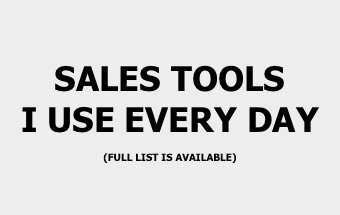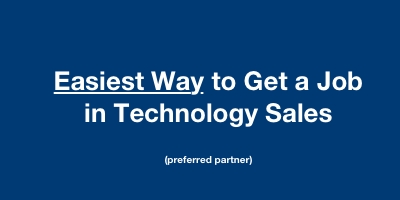How to Build a Lead List
So far, you read the sales books and studied the different sales tools.
Now, I want to build on those concepts. I am going to walk you through how to build a lead list, completely from scratch.
My goal is to give you a process to follow, so that no matter what, you can book meetings and generate sales.
4 steps to build your lead list
Let me just say, I’d rather drink from a fire-hose of warm, qualified inbound leads every single day.
Unfortunately, I don’t have that luxury 95% of the time. Hopefully, you do.
But if you don’t, this is a way to build a list of pre-qualified leads that you can warm up without the marketing team.
So, here’s what you do.
#1 Identify your ideal target customer
You need to do this first because this will determine where you find the leads in step 2.
The best way to identify your ideal customer is to analyze your existing customers. But if you don’t have any, then that’s all the more reason you need to get out there and talk to more people.
There are many more detailed posts on how to identify your ideal target customer (like this one by Greg Ciotti). However, I’m going to sum it up quickly:
Think About The ONE Person
Who Needs Your Product The Most!
Like if you were that person’s best friend, working in the same industry, you’d have to call them up and say: “hey, you really need to try this.”
That’s who you want to target.
I just spoke to the head of Sales Operations at Quri the other day (pronounced ‘cure-e’). They have 12-20 different attributes to identify their target customer.
The more detailed you are in this step, the more meaningful conversations you’ll have with the right people.
Some people call them influencers or decision makers. I like to call them “people just like you and me.”
As soon as you identify who to target, you can go find them. A lot of them!
#2 Choose a scalable source of leads
This concept kind of reminds me of a Warren Buffet quote: “when it’s raining gold, grab a bucket.”
Nowadays, with the possibilities online, it’s a lot easier to focus on one source with thousands of leads versus thousands of sources with only one lead each.
I already outlined the traditional data sources (where you can buy leads). So, let’s get a little more creative and try to get better results.
When my co-founder and I built EventChocolate, we targeted local event organizers that hosted at least 4 events per month with 50+ attendees.
Well, local event organizers need to sell tickets. How do they sell tickets?
They sell tickets through ticket management websites like Brown Paper Tickets. And as you can see, contact info is readily available on the website.

Lead source from Brown Paper Tickets
Since we knew we could help these event organizers and add lots of value to their business, there’s one thing we had to do.
We Scraped Over 7,500
Targeted Leads from One Website
At the time, my technical co-founder built the web scraper from scratch. But now, you don’t even need the programming chops to do it.
You can use tools like Import.io.
This was only one source of leads for us to build a lead list. There are many more. Be creative.
Let’s go on.
#3 Collect and organize leads into a spreadsheet
This part is pretty straightforward. You need to organize your lead contact information.
At scale, this becomes more and more difficult. So, be organized from the beginning.
Here is a spreadsheet you can use to organize your leads. It includes the most fundamental fields of information: company, first name, last name, title, email, phone number, city, state, lead source and notes.

Lead List – spreadsheet TEMPLATE (click to download)
No joke, this is the kind of spreadsheet used by top-tier investment banks to sell million and billion dollar companies.
I was surprised to discover that. But just goes to show you, it works.
Once you collect and organize the leads into a spreadsheet, you are ready to sell. Step 4 is not necessary, but it will boost your sales productivity.
#4 Import spreadsheet into your CRM
Some companies manage their entire sales process out of spreadsheets. I recommend you use a customer relationship management (CRM) solution.
Tawheed Kader, the CEO of ToutApp recently explained when it’s time for your company to move to a big boy CRM.
But, the whole point of a CRM is to streamline your communication between you and your leads. And track all that communication activity. That way, you have visibility into what’s going on in sales. Plus:
The CRM Data Will Show You
What’s Working Versus What’s Not
Nearly every CRM has an excel or csv import option. This is a screenshot inside the Salesforce dashboard.

Sample screenshot of CRM lead import
You can watch . It’s very straightforward.
Remember, if you are at an early stage company, this step is not essential. Your first priority is to get in front of customers immediately. Don’t waste time with fancy CRM solutions.
Conclusion
This process works. It’s the same process I use today to sell high-end enterprise SaaS software to Fortune 1000 companies. And it’s the same process I used when I was an investment banker to sell $25+ million dollar companies.
But shhhhh…it’s our secret.
Next time, I want to send you some information on cold emails. Specifically, how to send high converting cold emails (particularly for hard to reach people).
There are way too many things I wish I had known sooner – which I want to share with you.
Sound good?






22 Comments How to Build a Lead List